order
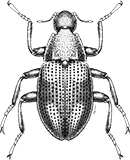
Coleoptera
“Adult Beetles”

Coleoptera
“Larval Beetles”

Diptera
“True Flies”

Ephemeroptera
“Mayflies”

Hemiptera
“True Bugs”

Lepidoptera
“Aquatic Caterpillars, Snout Moths”

Megaloptera
“Alderflies, Dobsonflies, and Fishflies”
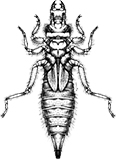
Odonata
“Dragonflies and Damselflies”

Plecoptera
“Stoneflies”

Trichoptera
“Caddisflies”
family
Chironomidae
Diamesa
“Non-Biting Midges, Midges”
Genus Overview
The genus of Chironomidae is known by the antennae being annulated. They are usually found in cool running water. Species estimated at above 20 species in North America.
Characteristics
POLLUTION TOLERANCE
Southeast: 7.7 and higher
Upper Midwest: 8 and higher
0 = least tolerant, 10 = most tolerant
FEEDING HABITS
Collector / Gatherer
Scraper / Grazer
Scraper / Grazer
MOVEMENT
Sprawler
DISTRIBUTION
Widespread (east of the Rocky Mtns.)
HABITAT
Lotic-erosional
Diagnostic Characters
order
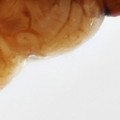
Legs Absent
family
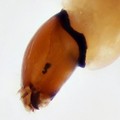
Head Complete and Exposed
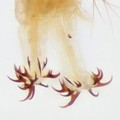
Thoracic And Anal Prolegs
+ Expanded Character List
Order:
Wings and wing pads absent. Eye spots sometimes visible, but compound eyes absent. Segmented legs absent, but sometimes fleshy prolegs present. Sometimes with distinct head, often without head or with head drawn deeply into thorax. Body flattened, cylindrical, or maggot-like.
Family:
Mandibles move against each other along horizontal or oblique plane. Head complete and fully exposed. Hook-bearing prothoracic and anal prolegs paired, though division may be slight and only at apex. Spiracles absent (apneustic). Body segments usually without conspicuous dorsal tubercles and setae as in some Ceratopogonidae.
Genus:
Premandible with multiple teeth, antenna annulatedm, pecten epipharyngis with 5 scales.
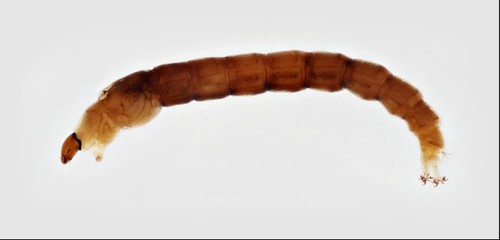
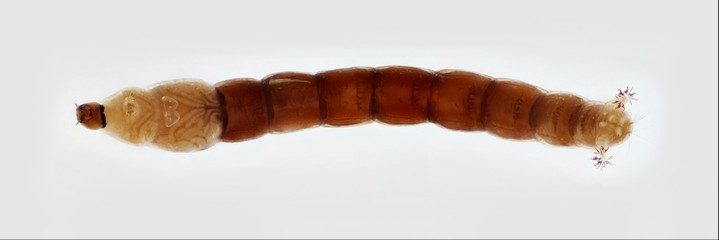
Lateral
Ventral



